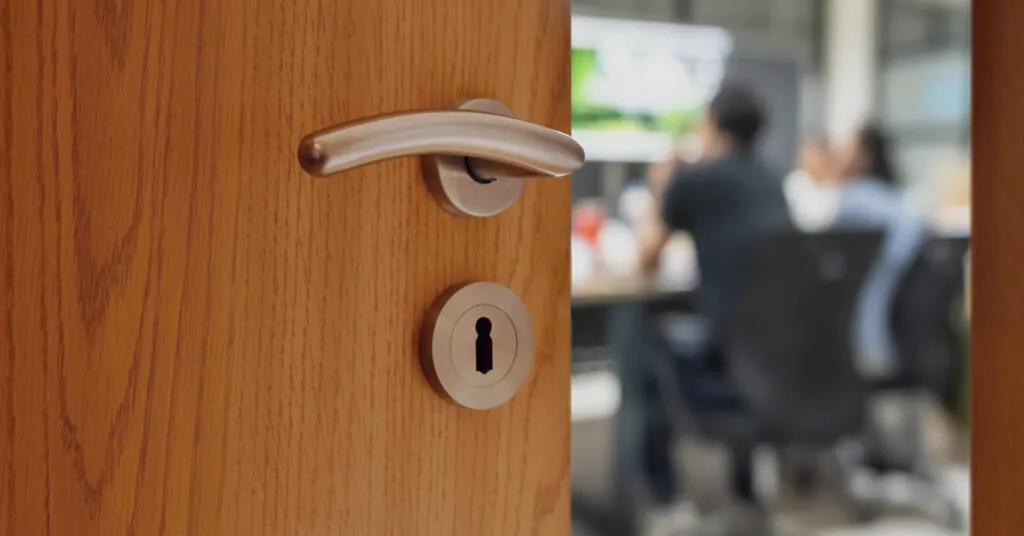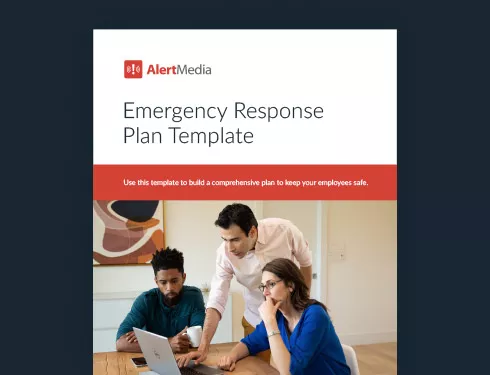
Emergency Armor: How to Conduct Shelter-in-Place Drills to Mitigate Dangerous Scenarios
When the worst happens at work, you may need your people to hunker down somewhere safe. Are you sure you’re prepared for everything that entails? Find out how to boost your readiness.

The 2022–23 holiday travel season was fraught by thousands upon thousands of flight delays, lost bags, and general chaos. An intense winter storm system, including the ominous sounding “bomb cyclone,” grounded planes and disrupted road travel for both people and mail parcels.
But that wasn’t all; some were trapped in an airport whether they had accommodations or not when a “shelter-in-place” command was given by DFW airport on Tuesday, December 13th, 2022.
Airport officials activated this shelter-in-place command after a tornado warning was issued for the area. During this time, stranded travelers, airline employees, and airport staff were all required to stay away from windows and remain indoors until the shelter-in-place order was lifted.
While this further delay likely caused some headaches and frustration among passengers, shelter-in-place procedures were there to keep people safe and potentially saved lives. This emergency response isn’t just for weather, and it’s an essential resource on your emergency management toolbelt. Today, we’ll explore what shelter-in-place is, when to use it, and how a business can use emergency drills to train everyone on proper procedure.
Download Our Emergency Response Plan Template
What Does it Mean to Shelter-in-Place?
Sometimes called a “lockdown,” a shelter-in-place action is when an authority notifies everyone in their purview to find a safe, indoor place and to stay there with various precautions until the triggering scenario has subsided. The purpose of these activities is to protect people and keep them inside when the outdoors present intense hazards. These procedures act as a sort of “emergency armor” that protects your people even during a disaster.
When are shelter-in-place orders issued?
High winds
One of the most common causes of sheltering in place is extreme winds that result from natural-disaster-level weather events like hurricanes and tornadoes. During these events, winds can become so fierce that they rip roofs right off houses and send cars airborne, posing obvious risks to those in the area. Staying in interior rooms and away from fragile glass windows and loose objects or furniture can significantly decrease the odds of injury.
Chemical/biological risks
Hunkering down in a safe, indoor location has uses beyond just weather. Chemical attacks/accidents most immediately affect people who are outdoors. Stay inside and block off outdoor air to keep people safe until the chemicals disperse.
Most everyone got a taste of this when ordered to shelter-in-place during the early COVID-19 lockdowns in 2020. The goal was the same: Keep people in their homes where they’re less likely to be exposed to others with the virus.
Violence
A shelter-in-place response has become more familiar over the past few decades. Due to the rise in school shootings, lockdown drills—a specific version of shelter-in-place—are common experiences in American schools, from kindergarten all the way up to colleges and universities.
As a part of an organization’s active shooter preparedness, employees should be instructed to leave or avoid the area if possible. If they can’t run, they should instead barricade themselves in a defensible indoor room and draw as little attention to themselves as possible.
What is a shelter-in-place drill?
Just like a fire drill or an evacuation drill, shelter-in-place drills provide a calm, safe environment to practice procedures that might manifest in real life as stressful, dangerous situations. However, many drills focus on evacuation and leaving the workplace behind in favor of a meeting place that serves as a safe haven.
But what about when the workplace is the safe haven? You don’t want someone falling back on their evacuation training and walking into danger, especially when they’re at work and your duty of care requires that you protect them. As a safety leader you need to prepare your people to do whatever it is you ask of them in the name of safety.
Most importantly, shelter-in-place drills give your safety team and your employees a chance to nail down their responsibilities and to identify any problems. For example, if a designated shelter room doesn’t have a reliable way to block/lock the door, that’s something that you can work with the facilities team to remedy ASAP so that your people and your space are ready to support a shelter-in-place at a moment’s notice.
Shelter-in-Place Drill Procedure
Like all drills, these shelter-in-place simulations are meant to mirror the real thing. You can think of these as practice “dress rehearsals” where you match the real-life procedure beat-for-beat. Run through this simulation as if it were really happening, and record how things proceed. You can use this data to reflect on and improve your plans.
1. Get inside!
Despite what the name implies, you don’t necessarily want to shelter right where you are when you hear the order. Instead, you need to go somewhere defensible and protected. Examples include windowless rooms with strong, lockable doors like closets and bathrooms. If you are already in a solid location, stay there and remind others of the procedures to remain in that location until the all-clear or until it becomes unsafe.
Note that portable structures are generally not hardy enough to sustain high-wind damage or physical intrusion. If you work in such a location, ensure your people have access to a sturdy shelter for these situations.
2. Shut and lock all entrances
Isolating the workplace from outside variables is key, especially during lockdowns caused by external violence or airborne toxins. If it is possible to close all exterior doors and windows safely, that should come first. Not only will this keep out intruders, but it will also prevent hazardous materials from entering the building—like smoke or chemical agents.
Delegate the responsibilities of securing exterior entrances to individuals or teams; otherwise, simple tasks like these might be forgotten or ignored. All it takes is one unsecured window for an armed intruder to make their way inside or for a cloud of toxic gas to float through the opening.
3. Turn off air handling equipment
One of the great comforts of the modern era, air conditioning systems, can do more harm than good during certain shelter-in-place events. As their primary function is to exchange air between different environments, your air conditioner or heater is likely to pump in air from outdoors. And if the outdoors is chock-full of hazardous particles, that’s the last system you want online if your workplace is in the middle of a biological attack.
Post instructions for how to turn off these systems and where the controls are during or even before your drill so that they can be accessed quickly during an emergency.

4. Secure openings
In the same vein as the last step, small openings need to be secured and air-tight if there are certain threats reported. Outside air could harbor contaminants and toxins that can seep through small gaps, and explosions can break glass and create deadly shrapnel. Tornado winds can rip open doors and send speeding glass shrapnel through the air. No matter the type of threat reported, you need to make sure the exterior entrances are properly secured beyond just closing and locking them.
For explosive threats, close all blinds and curtains to catch as much debris as possible if a blast hits nearby. For chemical threats, plastic sheeting and duct tape can provide extra protection according to Ready.gov. Turn on a TV or radio to listen for further instructions
During a real shelter-in-place emergency, having a way to hear from authorities like law enforcement, such as a radio or TV tuned to local news, is the only way you’ll be able to know when the situation is clear enough to emerge from the place in which you sheltered. Include this practice during the drill: Does every shelter have access to such information? If not, how can that be remedied?
However, during a drill, there won’t be any real emergency broadcast to signal the end of the exercise. Instead, use your own systems, such as an emergency mass notification system, to keep in touch with your people on their cell phones on your own terms.
5. Wait for the “all-clear” message
All emergencies must end, and your people need to know when the drill or lockdown is over. In a real shelter-in-place situation, local authorities will make this call, and this is why step 5 is so important. Once local officials or authorities broadcast that the attack/storm/airborne toxic event is over or if first responders come to the rescue, you need to account for all of your people and their safety. A great way to do this is with an emergency notification system that can survey everyone to ensure an accurate headcount.
From there, you can run an after-action report to determine what went well and what could be improved for next time. This iteration is the key to improvement in any emergency planning exercise.
Tailoring the Armor
Running shelter-in-place drills will familiarize your organization with certain threats as well as with itself. When performing these drills, you’ll see what your company’s strengths and weaknesses are so you can be better prepared for the real thing, should you ever encounter it. Try running these drills once every quarter or every other and see how your plans evolve with each iteration.




